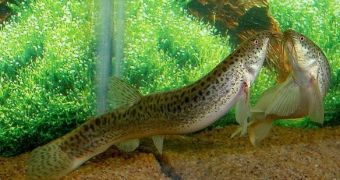Indigenous and rural people, staying in a closer contact with nature, can predict the weather by "reading" flora and fauna.
For example, in Europe, people know when a rainfall is approaching because lettuces, Hipochoeris radicata (a forb), and wall lettuces open their leafs. Bees, too, hurry up to their hive, the butterflies fly near the windows and the swallows and martens on "air pillows" at 10-20 cm (4-8 in) from the soil.
When a strong wind is approaching, trifle flowers huddle, cattle run with the tail raised on the field, and large fish go to the water's surface.
When a hard winter is approaching, white storks migrate earlier during the fall and hares fatten more than usually.
Both wild boars and their domestic descendants, the pigs, have a powerful instinct of weather prediction. If elements are going to worsen (for example 12 hours before the arrival of a blizzard during the winter), these animals start digging holes behind their shelters, which they sheathe with straws or dry plants, and in which the animals pass the bad weather.
The Weather loaches (Misgurnus species) are freshwater fish native of Asia and Europe. They can detect changes in barometric pressure before a storm begins and react with frantic swimming or standing on end.
Weather fish can also react to the slightest variations in the water quality. Toxic chemicals, like cadmium and cyanide, slow down the fish's heartbeat, while triclorethylene, a cancer causing chemical, intensifies it. There are even devices using the weather loaches: electrodes attached to an acrylic tube register loach's pulse and any modification is transmitted to the technician. The loaches are taken from clear waters, and replaced monthly, so that the delivered information to be exact. One of the most common freshwater fish species in North America is employed to protect drinking water from terrorists and accidental contamination, in this type of biological monitoring system.
Fish are kept in tanks constantly replenished with water from the municipal supply, and sensors in each tank register changes in the breathing, heartbeat and swimming patterns of the bluegills that occur in the presence of toxins. Bluegills can react to a wide range of chemicals and detect small amounts of toxins earlier than man made sensors. Big cities monitor constantly employing systems against chemical and biological agents, but electronic protection systems can trace only the toxins they are programmed to detect.
Bluegills are highly sensitive to chemical contamination in their environment, and when exposed to toxins, they suffer breathing changes - the fish version of coughing, flexing their gills to expel unwanted particles. The system monitors the behavior of individuals in a tank where dechlorinated water flows at reservoirs or treatment plants.
The reactions of the fish to the tank conditions, such as temperature, acidity and dissolved oxygen levels, are analyzed by a complex software. When at least six of the fish present an abnormal behavior, the computer calls or emails the technician on duty. To keep them from being stressed or sick, the fish "work" for two weeks and after that they are replaced by other individuals. Cities that employ bluegills are San Francisco and New York, for example.
But the bluegills have their limitations. Till now, they successfully detected at least 30 toxic chemicals, like cyanide, organic solvents, heavy metals, oil products or pesticides, but they cannot detect biological threats (germs). In fact, many fish, clam and daphnia species, can be used as indicators of chemical changes.
Game too can indicate contamination. The kidney of the hares accumulate cadmium. Analyzing the cadmium amount from hare kidney, the level of cadmium contamination in an area can be determined.

 14 DAY TRIAL //
14 DAY TRIAL //